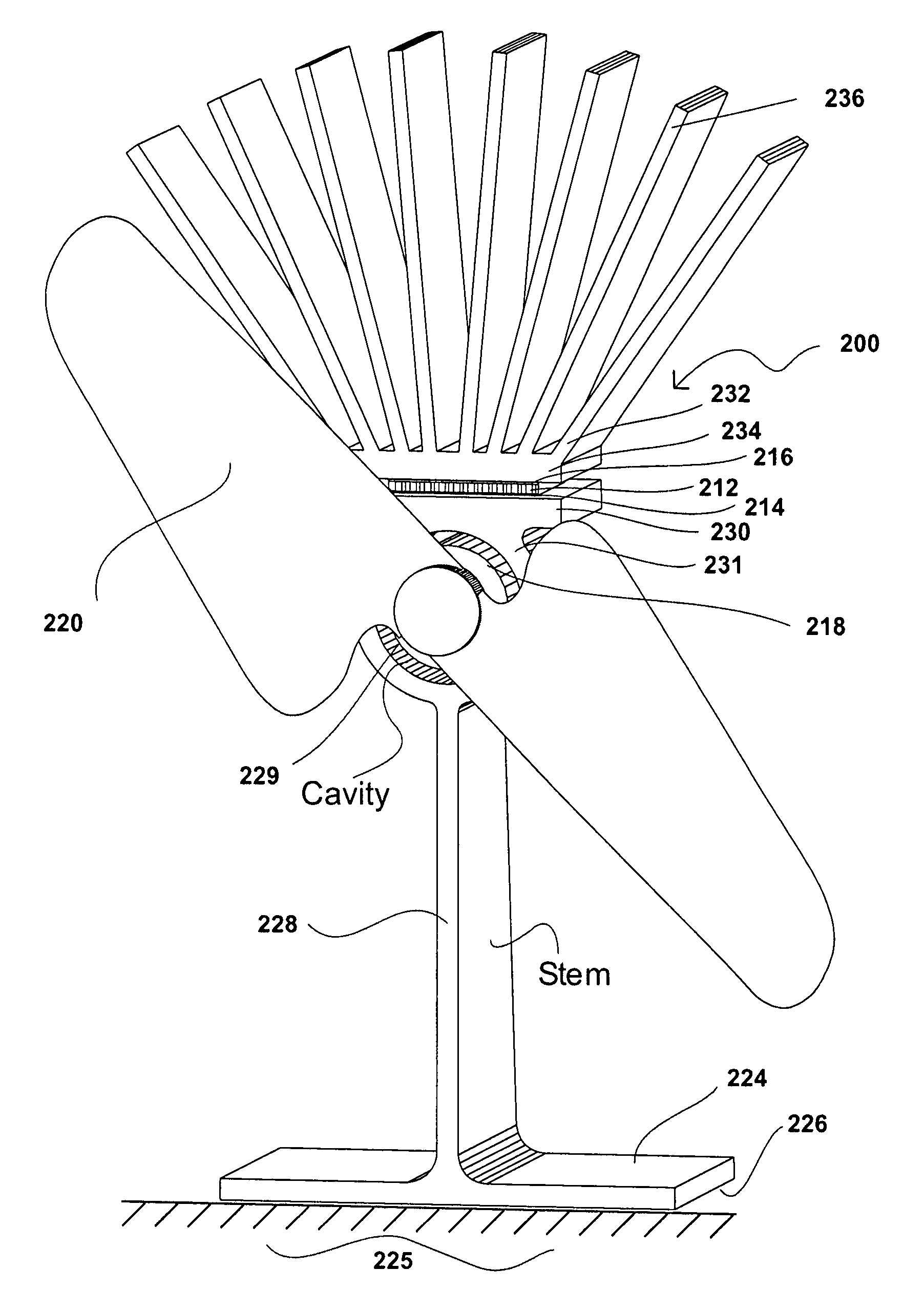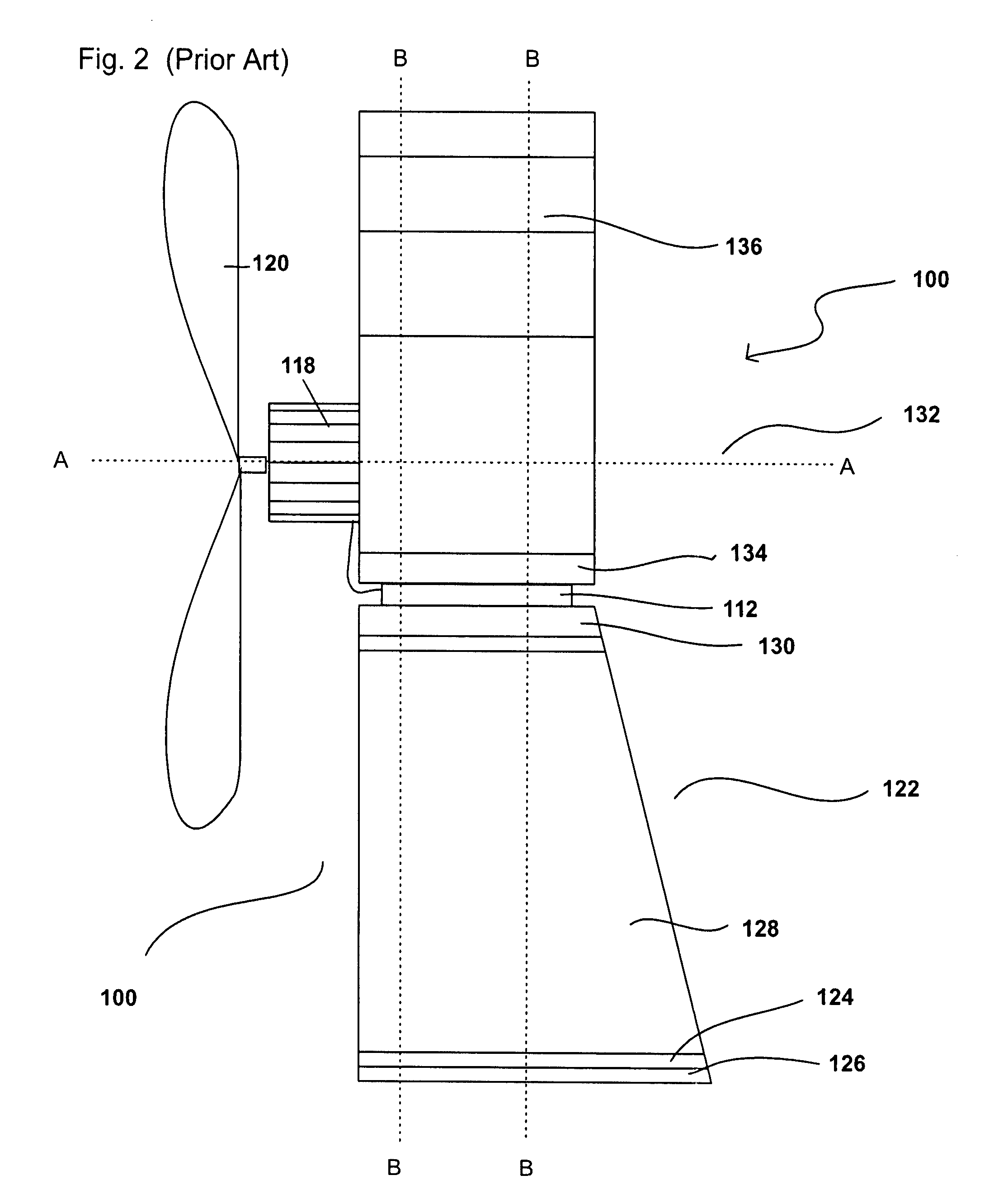Self powered heat transfer fan
a self-powered, fan technology, applied in the direction of heating types, applications, lighting and heating apparatus, etc., can solve the problems of insufficient and reliable use, thermoelectric modules simply overheating and being destroyed, and the tellurex corporation demonstration model has no practical and reliable utility as a warm air circulating fan, and achieves satisfactory air circulation
- Summary
- Abstract
- Description
- Claims
- Application Information
AI Technical Summary
Benefits of technology
Problems solved by technology
Method used
Image
Examples
Embodiment Construction
[0045]With reference to FIGS. 1 and 2, fan 100 of the prior art exemplified by U.S. Pat. No. 5,544,488 comprises a TE module 112 (cpl. 0-127-08L Melcor Frigichips, U.S.A.) comprised of an array of semiconductor couples (P and N pellets) connected electrically in series and thermally in parallel sandwiched between metallized ceramic substrates 114 and 116 according to the prior art. This module 112 can withstand temperatures only up to about 80.degree. C. Module 112 has an electrical connection with motor 118, which, drives fan blades 120, shown in outline only for clarity.
[0046]Fan 100 has a heat transfer member, shown generally as 122 having a rectangular-shaped base portion 124 having a lower surface 126 in operable contact with a heated surface of a stove or the like 125. Upstanding from rectangular base member 124 is an integrally formed vertically aligned planar heat transfer portion 128 upon which is an integrally formed heat transfer portion 130. Member 122 is, thus, constitu...
PUM
 Login to View More
Login to View More Abstract
Description
Claims
Application Information
 Login to View More
Login to View More - R&D
- Intellectual Property
- Life Sciences
- Materials
- Tech Scout
- Unparalleled Data Quality
- Higher Quality Content
- 60% Fewer Hallucinations
Browse by: Latest US Patents, China's latest patents, Technical Efficacy Thesaurus, Application Domain, Technology Topic, Popular Technical Reports.
© 2025 PatSnap. All rights reserved.Legal|Privacy policy|Modern Slavery Act Transparency Statement|Sitemap|About US| Contact US: help@patsnap.com



